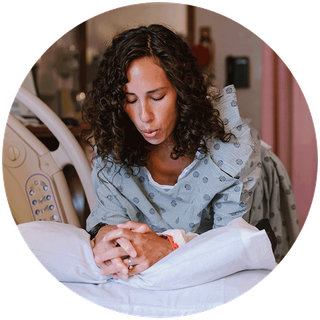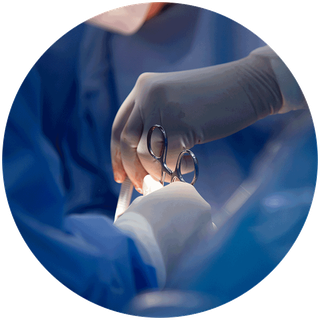Giving birth
Speak to your midwife about your delivery options, they can explain the benefits and risks of caesarean section and vaginal births.
Vaginal delivery
Around 6 out of 10 births in England are vaginal births. This is when a baby is born through the vagina.
Labour may begin spontaneously and continue until the baby is born, but in some cases labour needs to be started by induction. An induced labour is one that's started artificially in hospital. Read about inducing labour on the NHS website.
Having a vaginal birth after a caesarean section
If you've had a caesarian section (C-section) before, it is possible to go on to have a vaginal birth. If there's no medical reason to stop you, then your chances of having a vaginal birth after caesarian section are very good.
Talk to your doctor or midwife about the pros and cons.
Read about what happens during the 3 stages of labour and birth on the NHS website.

Caesarean section (C-section)
A caesarean section, also known as a C-section, is a surgical procedure in which your baby is delivered through a cut made in your tummy and womb. The cut is usually across the body on the bikini line.
Nearly 3 out of 10 babies are delivered by caesarean. This is a procedure that is ideally planned, but may also be carried out in an emergency.
Your baby is delivered through the opening and brought over to you. Then you'll be stitched up and offered an injection of oxytocin to help your womb contract and reduce blood loss.
The procedure takes 40 to 50 minutes, and you may need a few days to recover in hospital.
A caesarean is a major operation that carries a number of risks, so it's usually only done if it's the safest option for you and your baby.
Read about the risks, recovery and what happens during a caesarean on the NHS website.

Assisted delivery
Just over 1 in 10 births are assisted, which means the baby needs some help getting out with the use of a ventouse (suction cup) or forceps (surgical tongs).
You'll usually have a local anaesthetic to numb your vagina and the skin between your vagina and anus (perineum) if you have not already had an epidural.
You may need to have a cut made to the area between the vagina and anus (perineum). This is called an episiotomy and it makes the opening of the vagina a bit wider, allowing the baby to come through it more easily. Any tear will be repaired with stitches.
Read about what happens during assisted delivery on the NHS website.
